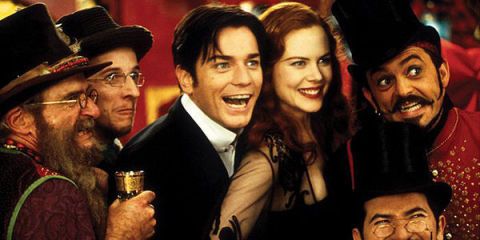Tonight, as I stress over the final we’re taking in the morning, I had no idea what to write this blog about. As a result, I’m going to take this opportunity to tell you all about one of my favorite movies: Moulin Rouge (I promise this relates to the class).
I first watched this movie on a flight from London to Raleigh. My screen decided not to work and I hadn’t downloaded anything to watch so I was facing almost 9 hours of complete boredom. My mom’s screen was working so she put on this random movie I’d heard of before but that had never really interested me. She offered me an earbud and between a seemingly silly musical and no entertainment, I chose to watch Moulin Rouge with her. I did not expect this movie to become one of my favorites and move me to tears as I strained to look at the screen on the seat next to mine.

It was entertaining enough in the beginning; it had fun songs and an interesting romance. Still, it was just another movie on a plane until we got to the “Tango de Roxanne”. This is a musical number where the characters deal with the difficult position Satine, one of the protagonists, has been put into in order to put on a spectacular show. I could talk for hours about how incredible the singing, dancing, and acting are in this sequence. However, I want to focus on the editing.
During this song, the director cuts between three main spaces: the dancers’ rehearsal space, the date between Satine and the man sponsoring her show, and Christian, Satine’s real love interest. The tango becomes a parallel of the increasingly compromising situation Satine finds herself in. By interweaving these three spaces with quick cuts and connecting them through the music, the director manages to create so much tension that I get shivers and an elevated heart rate every time I watch it. It’s hard for me to describe the brilliance of this scene because I can’t even conceptualize how someone puts together a story in this way. It’s overwhelming and chaotic but also so calculated and strategic.
I wanted to bring this scene to everyone’s attention because it’s been constantly present in my mind as we’ve been editing this week. The director could’ve easily filmed the tango and just put some b-roll of Satine’s date over it to connect those two concepts, or he could’ve just focused on the date, which would be sufficiently tense by itself. However, the director fully leaned into the power of editing and created one of the best sequences I have ever watched. While his creativity and courage have inspired me throughout this week, the “Tango de Roxanne” has mostly served as a constant reminder of the power of editing.
As we’re putting these short documentaries together, we have all the power to shape the story as we want, and that’s scary to me. This genre, which often claims to convey the truth, still has to go through the editing process, where a version of the story is fabricated. As the editors, it seems like our job with these projects is to use editing to elevate the messages and stories of the different people we focused on. However, I think it’s important to remember that in this process, we are shaping the stories as we see fit and creating a version of the truth. This level of power over a story still makes me uncomfortable but, just like editing made the “Tango de Roxanne” one of the greatest pieces of cinema I have ever watched, I think that we can use this tool to uplift the voices of others as best we can.

